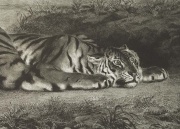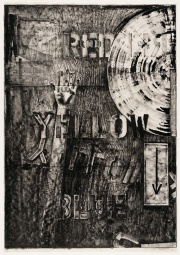Difference between revisions of "Lithograph"
m (Text replace - "== Authority ==" to "== Sources Checked for Data in Record ==") |
|||
| Line 26: | Line 26: | ||
</gallery> | </gallery> | ||
| − | == | + | == Sources Checked for Data in Record == |
Bamber Gascoigne, ''How to identify Prints''. New York: 1986. | Bamber Gascoigne, ''How to identify Prints''. New York: 1986. | ||
Revision as of 06:37, 1 May 2016
Description
A planographic printing process developed in Germany in the 1790’s. The technique relies on the tendency of water and oil to repel each other. Traditionally, a design is made on a Lithograph stone with a Lithograph crayon. The stone is wet with water. Ink is applied to the stone with a roller. The ink sticks where the crayon has been applied, and not where the stone is wet. Images are printed from the stone onto paper. Lithography was widely used to make posters in the 19th and 20th centuries. Later 20th century developments in lithography allowed greater freedom for artists to make designs in Tusche or to use surfaces such as metal and plastic.
Additional Information
Museum of Fine Arts, Boston, Lithography's First Half Century: the Age of Goya and Delacroix. 1996.
Additional Images
Sources Checked for Data in Record
Bamber Gascoigne, How to identify Prints. New York: 1986.
Richard Benson, The Printed Picture. New York: 2008.




